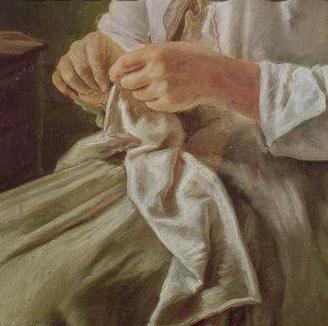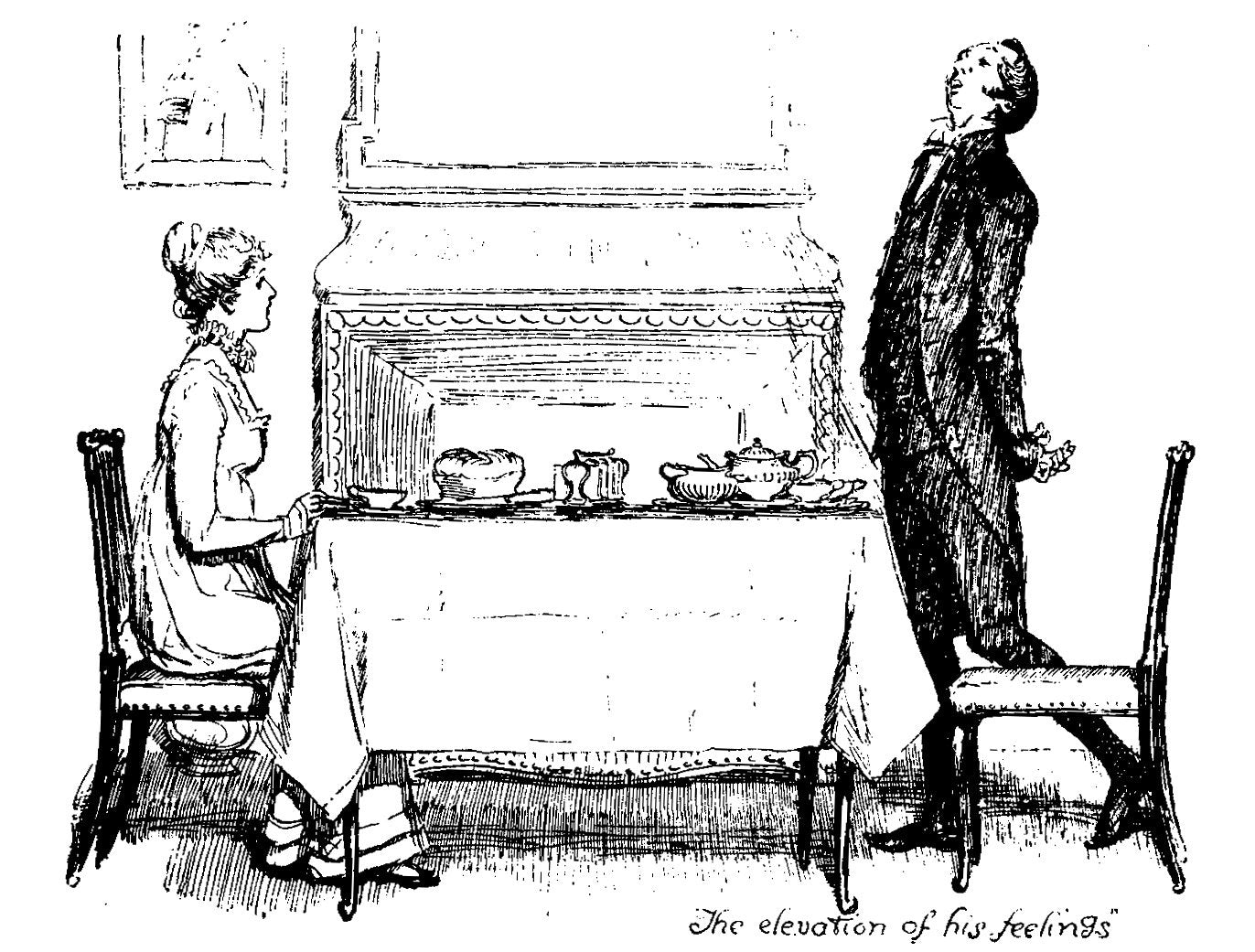The Regency Dessert Course
When the dessert and the wine were arranged, and Mrs Dashwood and Elinor were left by themselves, they remained long together in a similarity of thoughtfulness and silence.
Sense and Sensibility
In the 18th and 19th century, a formal dinner was looked upon as more than a fine meal. It was a sort of grand show. The finale of the meal--dessert--was the most elaborate and expensive course of the dinner; and it required a knowledgeable confectioner to create the spectacular dessert displays of the day.
The dessert fare included biscuits in great variety and macaroons served for dipping into sweet wines and liqueurs. Sugar biscuits that were closely related to meringues and gimblettes de fleurs d'orange that were large knotted biscuits were popular. The most fashionable dessert--ices--were presented in little serving cups known as tasses à glaces and came in a variety of flavors including: pistachio, barberry, and rye bread. The table was decorated with sugar-paste (pastillage) sculptures in forms such as cherubs and architectural shapes that recreated a garden or exotic locale in miniature. The display might decorate the dinning table throughout the dinner or grace a special dessert table in another room. This centerpiece was known as a plateau. It was generally placed on a mirror to increase the light and would include such items as temples and all the features usually found in a garden such as decorative pattern hedges (parterres) and flowers all created in sugar. The sugar-paste sculptures might be made by pressing the sugar mixture into elaborately carved wooden molds or by carving. Thus the confectioner would own an array of molds and special carving tools.
In addition to the table centerpiece decorations, each guest would find a tiny molded-sugar basket filled with bonbons or 'jeweled fruit' beside their place setting. Even the place card might be a sugar sculpture, often in the form of the coat of arms of the guest.  The confectioner's expensive and ethereal sugar-paste art began to be replaced by durable unglazed porcelain, known as biscuit, which looked very like sugar-paste. The French Vincennes/Sèvres porcelain factory began producing biscuit table figurines around 1751. By 1790, the Danish court owned a collection of 850 pieces of porcelain meant to decorate the dessert table ranging from the ubiquitous pavilions, statues, and urns to cascades and warships. The Prince of Wales had a separate confectioner's kitchen in his Brighton Pavilion and kept three confectioners on his staff so that he could entertain in the finest style.
The confectioner's expensive and ethereal sugar-paste art began to be replaced by durable unglazed porcelain, known as biscuit, which looked very like sugar-paste. The French Vincennes/Sèvres porcelain factory began producing biscuit table figurines around 1751. By 1790, the Danish court owned a collection of 850 pieces of porcelain meant to decorate the dessert table ranging from the ubiquitous pavilions, statues, and urns to cascades and warships. The Prince of Wales had a separate confectioner's kitchen in his Brighton Pavilion and kept three confectioners on his staff so that he could entertain in the finest style.
Sharon Wagoner is Curator of The Georgian Index. Visit this site for a historical tour through Regency London! Suggested reading: Feast: A History of Grand Eating by Roy Strong.
If you don't want to miss a beat when it comes to Jane Austen, make sure you are signed up to the Jane Austen newsletter for exclusive updates and discounts from our Online Gift Shop.




Leave a comment
This site is protected by hCaptcha and the hCaptcha Privacy Policy and Terms of Service apply.